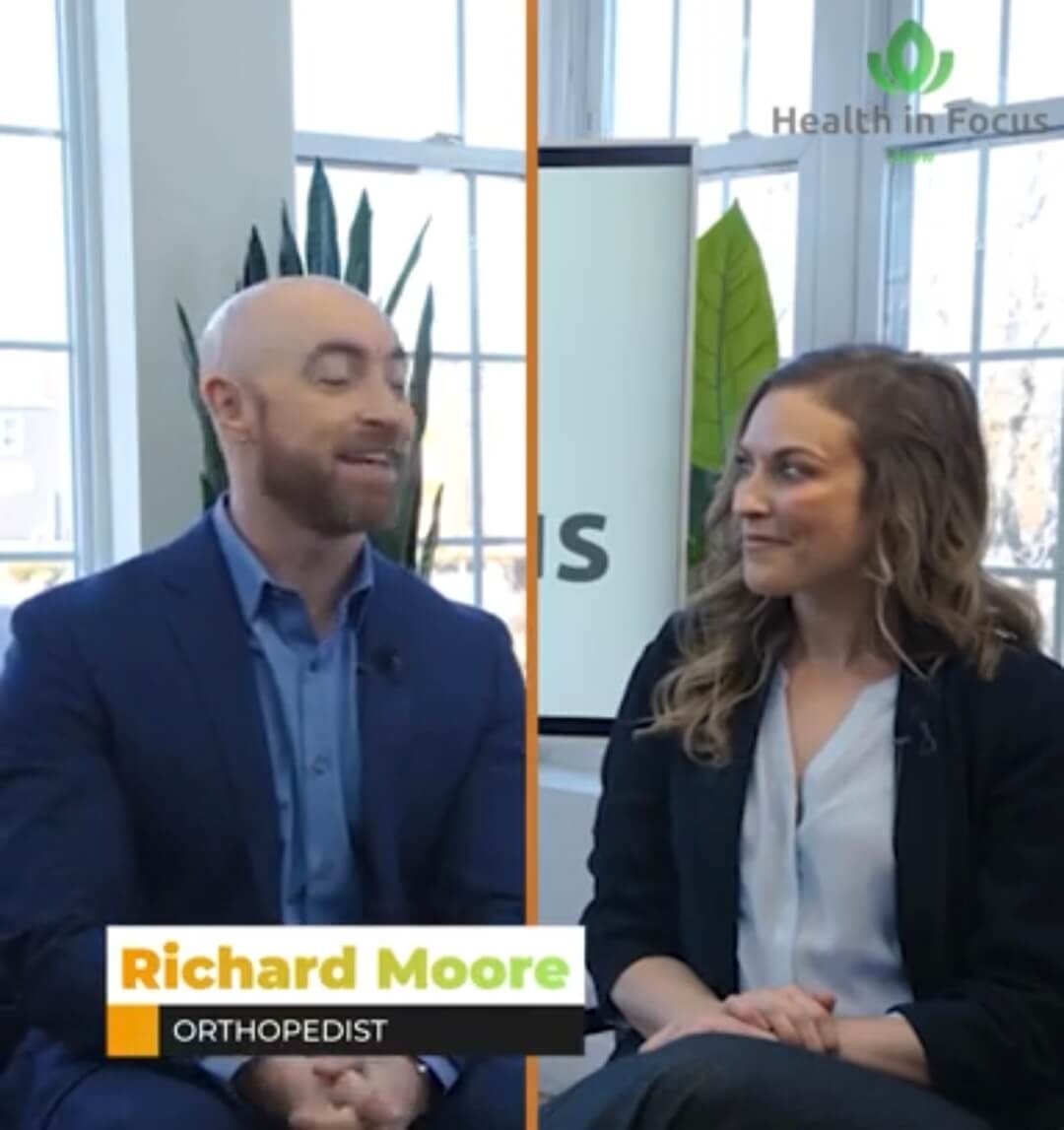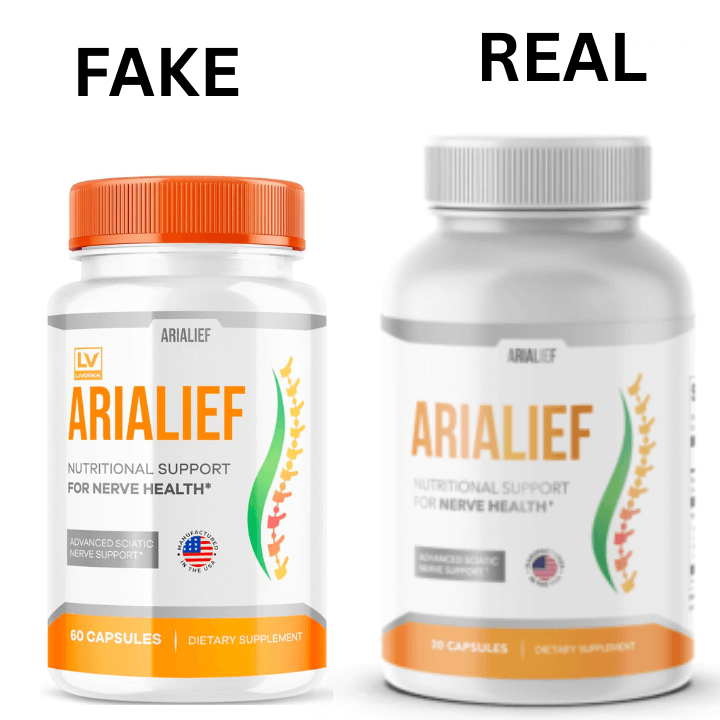Dr. Richard Moore Orthopedic Surgeon...
If you’re here, you’ve probably seen that powerful interview featuring Dr. Richard Moore—the well-known orthopedic surgeon—on Rachel Mathews’ Health In Focus program.

And now you’re probably asking yourself…
“Who is Dr. Moore really, and what’s this intriguing yellow vitamin he claims can ‘switch off’ nerve pain right at its origin?”
Let’s unpack it.
Why I Built This Website (And Why You’re Likely Here Too)
Let me start by saying this: I’m not Dr. Richard Moore, and this website has no official ties to him or his practice.
My name is Jessica Garcia, and I’ve worked in senior care for years.

In that time, I’ve seen far too many older adults endure the relentless grip of nerve pain — the burning, tingling, and numbness in their hands and feet that just won’t go away.
They’ve tried it all — medications, physical therapy, high-tech gadgets — but real, lasting relief always seemed just out of reach.
Naturally, I wanted to understand more. Not just for the residents under my care, but also for their families — the ones who quietly carry the emotional weight of watching a loved one suffer.
Then, one evening, while casually scrolling through Facebook, I stumbled on an interview featuring Dr. Moore. I clicked play without thinking much of it.
But what I saw stopped me in my tracks.
He described symptoms that mirrored what I saw every day — as if he were talking directly about the very people I work with.
What truly grabbed my attention, though, was his mention of a so-called “Yellow Vitamin” — something he claims targets nerve pain at the root and helps calm and protect damaged nerves.
I was skeptical, of course. It all sounded a bit too convenient.
But I couldn’t ignore the possibility that something out there might actually work — something that could finally give these amazing people the comfort and peace they’ve been hoping for.
So I started digging.
I wanted to know:
- Why haven’t I heard about this before?
- What exactly is this yellow vitamin?
- Is there any science to support it?
- And most importantly… could it really help?
I pored through medical journals, spoke with health professionals, and searched for real-world stories from people who’ve tried it.
Eventually, I decided to put all that information together here — because if I had these questions, I figured others did too.
So if you're like I was — curious, cautious, and searching for answers — keep reading. I’ll share everything I’ve uncovered.
So, Who Exactly Is Dr. Richard Moore?
Before we dive deeper, it’s worth taking a moment to look at the man behind this intriguing “Yellow Vitamin” that’s gaining attention for its reported impact on nerve pain.
Dr. Richard Moore is no ordinary physician.
He’s widely recognized as an expert in orthopedic medicine, with a strong focus on spinal health and nerve-related pain conditions.
Over the past 15+ years, he’s treated more than 20,000 patients dealing with various forms of neuropathy.
He’s also the author of the bestselling book Neuropathy: The Ailment of the Century, which explores the growing epidemic of nerve damage and the latest approaches to managing it.
What sets him apart even more?
Dr. Moore has collaborated with world-renowned researchers, including scientists at Sweden’s prestigious Karolinska Institutet — the same institution that selects Nobel Prize winners in medicine.
While there, he worked closely with Dr. Sven Johansen, a professor recognized for groundbreaking studies in neuropathic pain treatment and nerve health.
In short, Dr. Moore isn’t just another voice in the crowd — his work is backed by years of clinical experience, international collaboration, and a relentless focus on helping people find relief from chronic nerve pain.
What Exactly Is the Yellow Vitamin for Neuropathy?
Dr. Richard Moore refers to the “Yellow Vitamin” as a naturally occurring fatty compound that your body already makes — just not always in the amounts you need.
Its primary function?
To calm overactive nerves, reduce inflammation, and support the healing of damaged tissues — particularly in areas commonly affected by neuropathy like the feet, hands, and spine.
The problem is, as we age or deal with ongoing inflammation, our internal supply of this compound tends to dwindle. That’s often when symptoms like burning, tingling, or numbness begin to appear and linger.
In the scientific community, this nutrient goes by a more technical name: Palmitoylethanolamide, or PEA for short.
You might not hear much about it in everyday conversations — but it’s been quietly studied for decades for its potential to ease nerve pain naturally, without the side effects of prescription drugs.
Dr. Moore believes that supplementing with PEA could help restore balance and offer real, meaningful relief for those struggling with neuropathic discomfort.
So… does it actually work?
While I won’t make any bold promises, I can say this: I’ve come across a growing body of research that strongly supports its role in managing nerve-related pain.
Even the National Institutes of Health (NIH) — one of the most respected medical research agencies in the world — has weighed in on PEA’s potential. Here’s what they’ve found…

Should You Just Grab a PEA Supplement and Hope for the Best?
Palmitoylethanolamide (PEA) — or the “Yellow Vitamin,” as Dr. Moore calls it — has shown real promise in several scientific studies when it comes to managing nerve pain.
But before you rush out to buy a PEA supplement, there’s something you should know:
Not all PEA supplements are created equal.
In fact, most of the options on the market are either too weak, poorly absorbed, or formulated in a way that limits their impact — especially when taken by themselves.
So, what’s the better option?
Dr. Moore and his research team took things a step further. Using their unique Primepalm™ technology, they enhanced the power of PEA by blending it with five additional ingredients — each one backed by science for its role in soothing nerves and promoting long-term relief.
The result?
A comprehensive 6-in-1 nerve support formula that aims to:
→ Soothe overactive or inflamed nerves
→ Support natural nerve tissue repair
→ Disrupt pain signals at their origin
The product is called Arialief, and it’s available exclusively through the official website.
While digging into this, I discovered there’s a lookalike version being sold on Amazon — clearly trying to piggyback on Arialief’s growing reputation.
Here’s how you can tell them apart:
- The counterfeit usually has an orange cap
- The authentic Arialief has a white cap and is only available from the official site
Yes, the real version may cost a bit more — but it’s the only one made using Dr. Moore’s precise formulation, their proprietary Primepalm™ process, and it’s backed by a 60-day money-back guarantee.
If you’re seriously considering giving this a try, make sure you’re getting the genuine product — not a cheap knockoff that could leave you disappointed.

Arialief for Nerve Pain: Real Solution or Just Another Overhyped Supplement?
Let’s cut to the chase — you’re not here for marketing fluff. You just want a straight answer:
Does it actually help?
Here’s the honest truth: I’m still in the process of finding out.
I only discovered Arialief a few days ago, so I don’t have a personal story of relief to share just yet.
What I can tell you is this: I’ve passed along everything I’ve learned — including Dr. Moore’s interview — to several families and residents at the senior care facility where I work.
Some were skeptical. Some were curious. And a few decided to try it.
As I hear their feedback — whether it’s positive, negative, or no change at all — I’ll be updating this review with their experiences.
But in the meantime, here’s what I can share:
I’ve come across dozens of testimonials from real users claiming noticeable improvements:
- Reduced burning and tingling sensations
- Greater comfort when walking or using their hands
- An overall improvement in daily quality of life
That’s promising. But what does the research say?
In his interview, Dr. Moore explained that nerve discomfort is largely driven by what he calls “pain molecules” — scientifically known as pro-inflammatory cytokines.
So is there truth to this?
Traditionally, neuropathy has been associated with chronic conditions like diabetes. But newer research suggests that inflammation — particularly involving these cytokines — plays a bigger role than previously thought.
In fact, ScienceDirect, one of the leading platforms for peer-reviewed scientific literature, contains numerous studies supporting this inflammation–neuropathy connection.
This could explain why a compound like PEA (Palmitoylethanolamide) — which is known for its anti-inflammatory properties — might help calm overactive nerves and reduce pain at the source.

Numerous studies from the National Institutes of Health (NIH) also support the idea that pro-inflammatory cytokines could be a key factor behind persistent nerve pain.

The next thing I wanted to understand was whether increasing PEA levels could actually make a difference.
From what I’ve seen so far, there’s a growing body of research suggesting it might.
PEA supplements have been around for decades — nearly as long as neuropathy itself has been discussed — but the real question is: how do you make it more effective?
According to Dr. Moore, the answer lies in "fortifying" PEA with additional plant-based compounds that are already known to support nerve health. That’s the idea behind Arialief.
This formula doesn’t just rely on PEA alone — it combines it with five other natural ingredients using their proprietary Primepalm™ technology, designed to improve both absorption and results.
But Let’s Be Honest, no supplement is a magic cure for everyone.
Just because it worked for someone else doesn’t guarantee it’ll do the same for you.
And if it didn’t help someone you know? That doesn’t automatically mean it won’t work in your case.
Bottom Line:
The only real way to know if Arialief will bring you relief is to try it for yourself.
If you’re curious and think it’s worth a shot, just tap the button below to get all the details and decide whether it’s the right move for you.
Copyright 2025 All Rights Reserved.